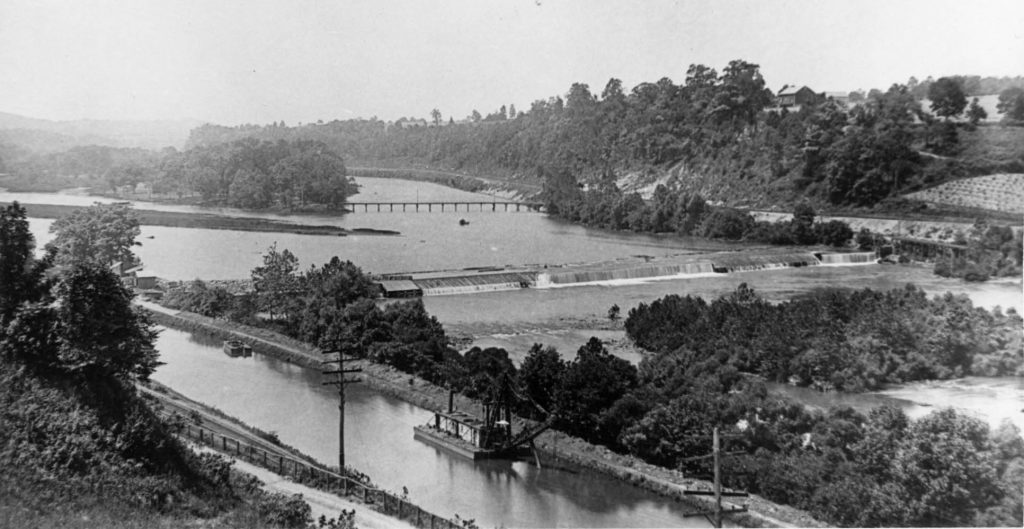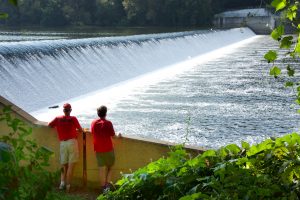The dam on the Lehigh River near the Locktender’s House in Hugh Moore Park is undoubtedly picturesque, but why is it sometimes called the “Chain Dam”? And you might have heard about a bridge that was once nearby, but some sources call it the “Chain Bridge” and others the “Change Bridge”. We’re going to set the record straight.

Chain Dam and Section 8 of the Lehigh Canal are seen in this photo from about 1900. In the rear is the trolley trestle to the amusement park that gave Island Park its name.
Before 1857, the boats were poled across the Lehigh River more than a mile upstream of Dam No. 8. That dam was commonly known as “Chain Dam” because Lehigh Coal and Navigation (LCN) had installed a large chain near it that was intended to stop any boats from disastrously going over the dam. Even so, that fate befell at least one boat in the 19th century; the crew, mules and coal were all lost. It must have been a nerve-wracking crossing, particularly in bad weather.
In 1855, LCN’s chief engineer proposed using the big island (now known as Island Park) just upstream of the dam to get across the river. In 1857, a short causeway was built from the Bethlehem Township side to the west end of the island, and a nearly mile long towpath ran along its south shore to the “Change Bridge”, a suspension bridge supported by iron wire rope. The mules walked over it, towing the boats over the main part of the river to the opposite bank. From there it was a short distance to the entrance to Section 8 of the canal.

























Join the Conversation!